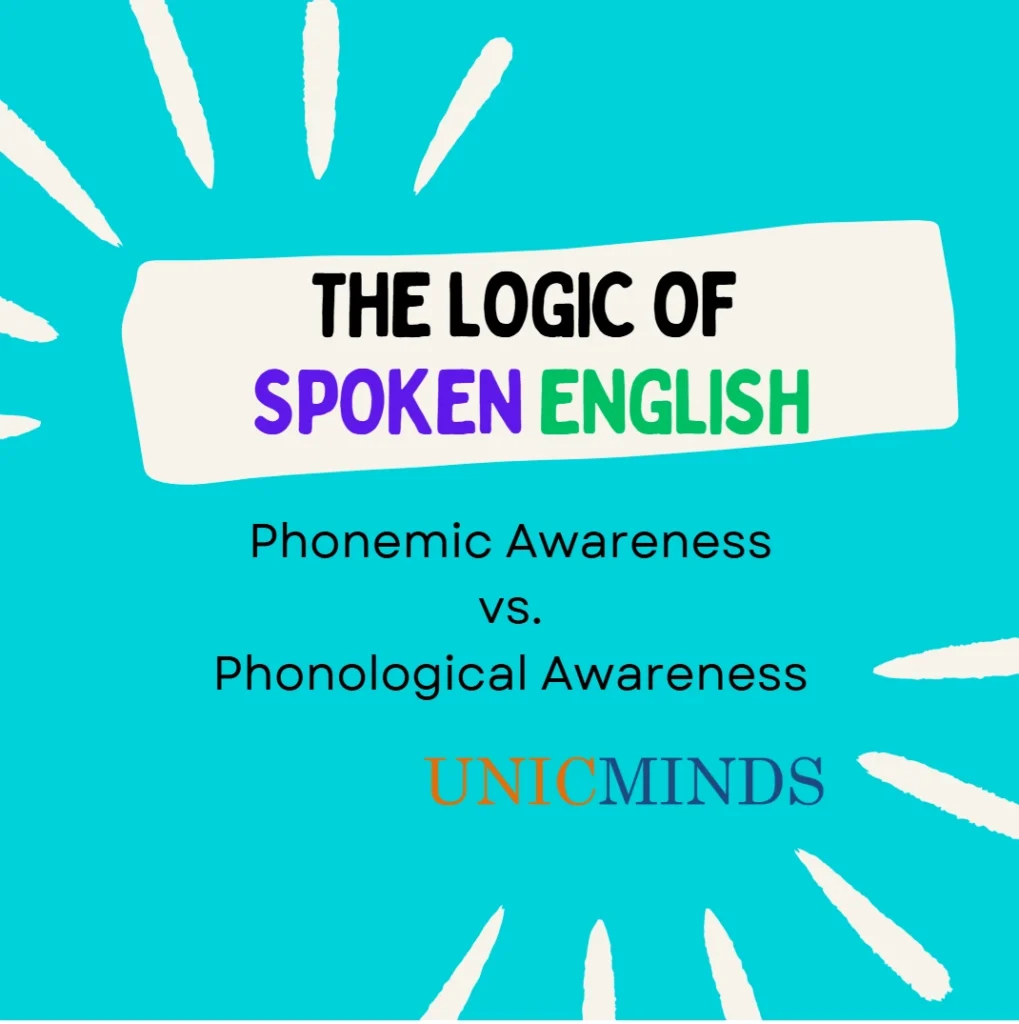Phonemic Awareness is a subset of Phonological Awareness. All phonemic awareness activities are also phonological awareness activities, but the reverse is not true.
The five levels of phonological awareness are:
- Word Awareness: where children can hear and identify the individual words within spoken language. Word isolation and identification, sentence segmentation and production are the three stages of word awareness. Sentence production is for higher level students.
- Syllable Awareness: Syllable awareness is the ability to identify and manipulate the beats (syllables) within words. It includes activities like counting, tapping, segmenting words into their syllables, as well as blending them to form words.
- Intra-Syllable Awareness: narrowing words down into the units we often refer to as onset and rime. This level includes blending onsets and rimes to form words and segmenting the onset from the rhyme in words. It includes adding, deleting, or changing the onset and rhyme in a sound cluster or word.
- Sentence Segmentation: Sentence segmentation, a core phonological awareness skill, involves breaking down spoken sentences into individual words. It’s a foundational skill for learning to read and write, as it helps children understand the structure of language and how words combine to form meaning.
- Phonemic Awareness: is the most advanced and final stage of phonological awareness. It has four major sub-skills: hearing, focusing on, and manipulating sounds.
Phoneme-level work (phonemic awareness instruction) has the most direct impact on reading and writing success, so we should start with children early. The other phonological tasks (rhyming, alliteration, syllable clapping) are not prerequisites to phoneme-level work (or reading).
Successful phonics instruction requires the development of phonemic awareness. Phonemic awareness focuses on teaching children the relationship between the individual sounds in spoken words and the spellings that represent them in written language. This is crucial for the overall phonological development in students.
Don’t limit phonemic awareness instruction to oral practice. Research shows that bringing phonemic awareness and phonics instruction together as soon as children have learned a few sound-spellings is most beneficial.
In our Foundations of English Literacy course, each of the above topics of phonological awareness are covered in detail with multiple activities and worksheets to reinforce the learnings.
Hope this is useful, thank you.
You may like to read: CogAT Verbal Practice Questions, Teaching Degree in Singapore Early Childhood Education, & Phonemes vs. Graphemes vs. Phonics vs. Phonetics vs. Syllables




